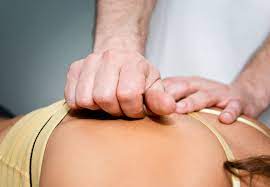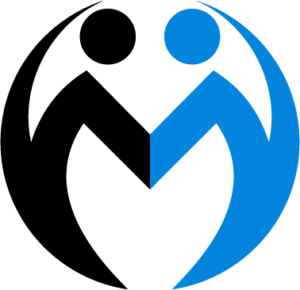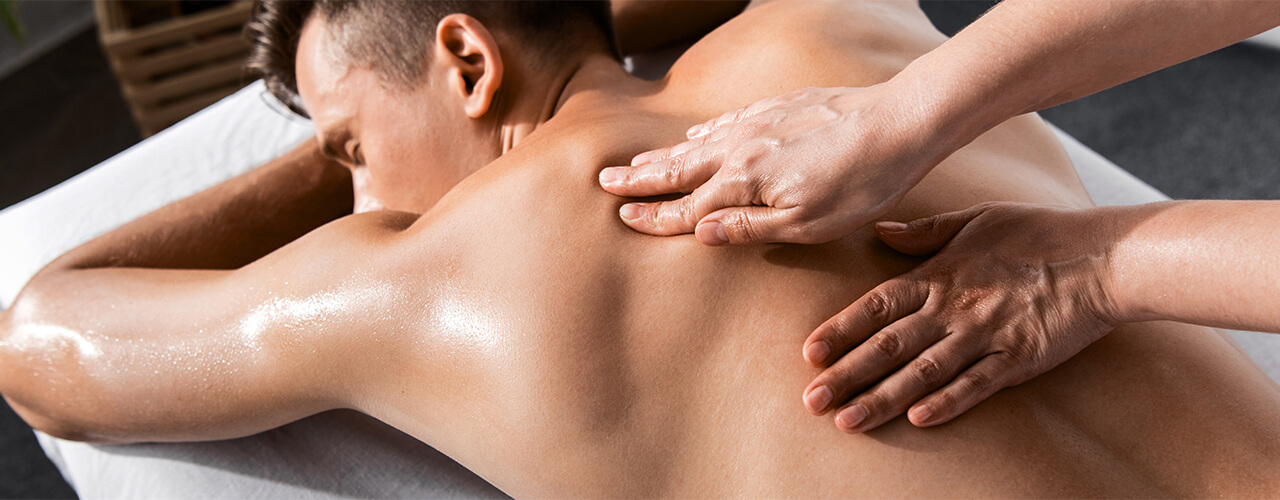Many cases of neck and back pain are caused by problems with muscles. Back and neck strain can cause sore, tired, or overworked muscles or even tears in muscles, which can cause a lot of pain. Using both electric and manual massagers can help treat these problems, from a light massage to deep muscle therapy in Abbotsford and trigger points.
Sore or stiff muscles can make it hard to do everyday things and do well in sports. Muscle pain, soreness, and tenderness are common problems at work. This is especially true for people who do the same thing over and over again. Medela rehab offers the complete treatment of muscle therapy in Abbotsford. Abbotsford is taking advantage of the low prices, the high quality, and expertise Provided by muscle therapy in Abbotsford.

Therapy That Allows You To Control The Massage
Most of the items are ones that you use yourself or that require you to do something. This makes it possible to massage exactly where, how hard, and for how long. They make it easy to get to hard-to-reach places where neck, shoulder, back, or almost any other muscle pain happens.
Benefits of Muscle Therapy
A study published in the Journal of Family Medicine and Primary Care in 2021 found that manual trigger point release in the upper trapezius muscle decreased pain and increased range of motion in the neck more than positional release therapy did for computer users with neck pain.
Joint Problems
Massagers like neck and back massagers get their power from electricity or batteries. This lets the joints move around on their own, which helps to lubricate them and restore smooth movement. It will also help to massage the muscle therapy in Abbotsford, but the main focus can be on getting the joints to work again by moving more and eating better. Using massagers that don’t have motors can also help move the joints. This can be done often for short amounts of time, making it easier to treat areas that are hard to get to.
Headaches
Neck pain often comes with a headache. This is often caused by the occiput, which is a group of muscles at the base of the skull. This connects the muscles in the upper part of the neck to the base of the skull. When you have bad posture or sleep on a pillow that doesn’t support your head, stress and tension can also make these muscles stiff. Pain in the head can come from trigger points in this area. The occipital release is a method that therapists often use to help relax these muscles, and there are massagers that are made just for this type of therapy. Laying on the massager and letting gravity do the work is how the massage is done. However, making some simple movements, like turning the head or doing the basic form of neck exercises, the nodding motion, can help bring relief more quickly.
Tendinitis
Repetitive work tasks can hurt not only the muscles but also the tendons. Tendons are the places where muscles attach to bone. Tendinitis, or inflammation of the tendons, can happen anywhere there is muscle therapy in Abbotsford, but it happens most often in the elbow or wrist extensors. Cross-friction massage is a type of therapy that is often used. This massages across the tendons instead of along the lines of the muscle fibers. This is painful and shouldn’t be done for too long, but it can help with tendinitis. Usually, ice is used to reduce swelling, but this type of treatment can also help tendons.
Fascia
Myofascia is the connective tissue that surrounds the muscles. Fascia is a continuous band of fibrous tissue that runs through your whole body. It is tightly woven and linked to every nerve, muscle, blood vessel, bone, and organ in the body. When the fascia is hurt, fibrous scars can form that can stick to nerves. This can make it very painful to move and throw off the balance of the muscles and bones. Myofascial therapy helps free up nerves that are stuck so they can move freely again. These increases function by restoring movement and reducing pain.
Even though these techniques work best when done by a professional, you may find a specific spot that hurts a lot. By applying pressure to the area and moving the muscle, you can help loosen the tissues. See the neck injury page for more information on how this technique affects the body.
- A study published in the International Journal of Psychiatry in Clinical Practice in 2020 found that people with myofascial pain syndromes had significantly more depression, emotional ups and downs, and anxiety than a healthy control group.
- A study published in the journal Morphologie in 2021 found that the thickness and number of nerve fibers of the fascia in the thoracic-lumbar spine increased as you moved down the spine, with the thickest fascia and most nerve fibers in the sacral area.
- Clinical Biomechanics published a study in 2021 that found that myofascial release has immediate effects on the neuromechanical characteristics of people with low back pain. Tensiomyography showed that there was a significant increase in the speed of contraction in the lumbar erector spine.
- A study published in Clinical Biomechanics in 2021 found that 4 sessions of myofascial release helped normalize the flexion-relaxation response and reduced pain and disability in people with chronic non-specific back pain.
- A review in Clinical Anatomy from 2022 shows Chronic neck pain is often accompanied by a number of other symptoms, such as pain in the head and neck and problems with how the eyes move. The proximal myofascial chain is made up of the deep cervical fascia of the neck, the epicranial aponeurosis of the head, and the fascial sheath of the eyeball. Therapy may help with painful head and neck disorders.
- Clinical Anatomy published a study in 2022 that says the deep fascia in the neck and back is a continuous band of connective tissue that wraps around the bones, muscles, nerves, and blood vessels. Pathological fascia has more stiff tissue and changes in the way cells work. There are signs of inflammation and nerve fibers that are more dense and sensitive.
Acupressure
This is an old way to heal that involves putting light pressure on many healing points on the body. People believe that these points will help your body heal itself. This is a very good way to treat problems caused by stress, and it can be used alone or with other types of Muscle therapy in Abbotsford.
Reflexology
This is based on the idea that your nervous system links everything in your body together. People think that if you stimulate the nerve endings in your feet and hands, it can help treat problems all over your body. Reflexive points might be like acupoints and can be treated in the same way. The last two treatments are the ones that are the least harsh. This means that everyone can use massagers that help with self-care and awareness.
Muscle Therapy Effectiveness
Muscle pain can make it hard to do things around the house, at work, or in sports. This pain can be caused by inflammation caused by tiny tears in muscle fibers that happen when you do the same thing over and over or contract your muscle therapy.
There are a lot of these things, and some of them are very cleverly made. Some of them are very helpful because they can be used to massage almost any muscle. They are also very light and easy to use. The fact that they are so popular shows that they do help. Some of these massagers can also help with pain and dysfunction, according to research.
- A study published in the Journal of Manipulative and Physiological Therapeutics in 2021 found that a single application of myofascial release to the upper trapezius reduced neck pain on both the treated side and the untreated side, just like dry needling.
- A 2019 study in the Journal of Sports Rehabilitation found that self-myofascial release with movement is good for shoulder range of motion and muscle length, and it may also help with rounded shoulder posture.
Self-myofascial release is easy with these tools. For example, the levator scapula is a muscle that can cause neck and shoulder pain by putting pressure on the top of the neck and pulling down toward the shoulder while bending the neck to the other side. Very effective, and you can do this with almost any muscle. The muscle therapy, cane tool, and deep-tissue blocks are all great ergonomic tools for this.
- This was more common in women. There was also a link between being right-handed and lumbar myofascial stiffness on the right side.
The fascia is closely connected to the muscles, and when problems happen, they are often called myofascial pain syndromes.
- A study published in the International Journal of Psychiatry in Clinical Practice in 2020 found that people with myofascial pain syndromes had significantly more depression, emotional ups and downs, and anxiety than a healthy control group.
- A study published in the journal Morphologie in 2021 found that the thickness and number of nerve fibers of the fascia in the thoracic-lumbar spine increased as you moved down the spine, with the thickest fascia and most nerve fibers in the sacral area.
- A study published in the journal Clinical Biomechanics in 2021 found that myofascial release has immediate effects on the neuromechanical traits of people with low back pain. Tensiomyography showed that the speed of contraction in the lumbar erector spine increased significantly.
- A 2022 Review in Clinical Anatomy says Chronic neck pain is often accompanied by a number of other symptoms, such as head and neck pain and problems with how the eyes move. The deep cervical fascia of the neck, the epicranial aponeurosis of the head, and the fascial sheath of the eyeball make up the proximal myofascial chain, and therapy may help manage painful head and neck disorders.
- A study published in Clinical Anatomy in 2022 says that the deep fascia in the neck and back is a continuous band of connective tissue that wraps around the bones, muscles, nerves, and blood vessels. Pathological fascia has stiffer tissues and changes in the way cells work. There are signs of inflammation and nerve fibers that are denser and more sensitive.
The prices of Muscle therapy in Abbotsford in Europe are six times more than in Abbotsford and much more than in Canada.

